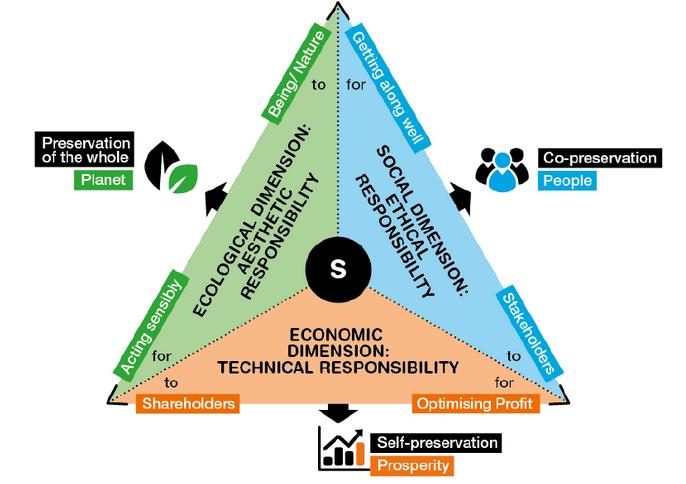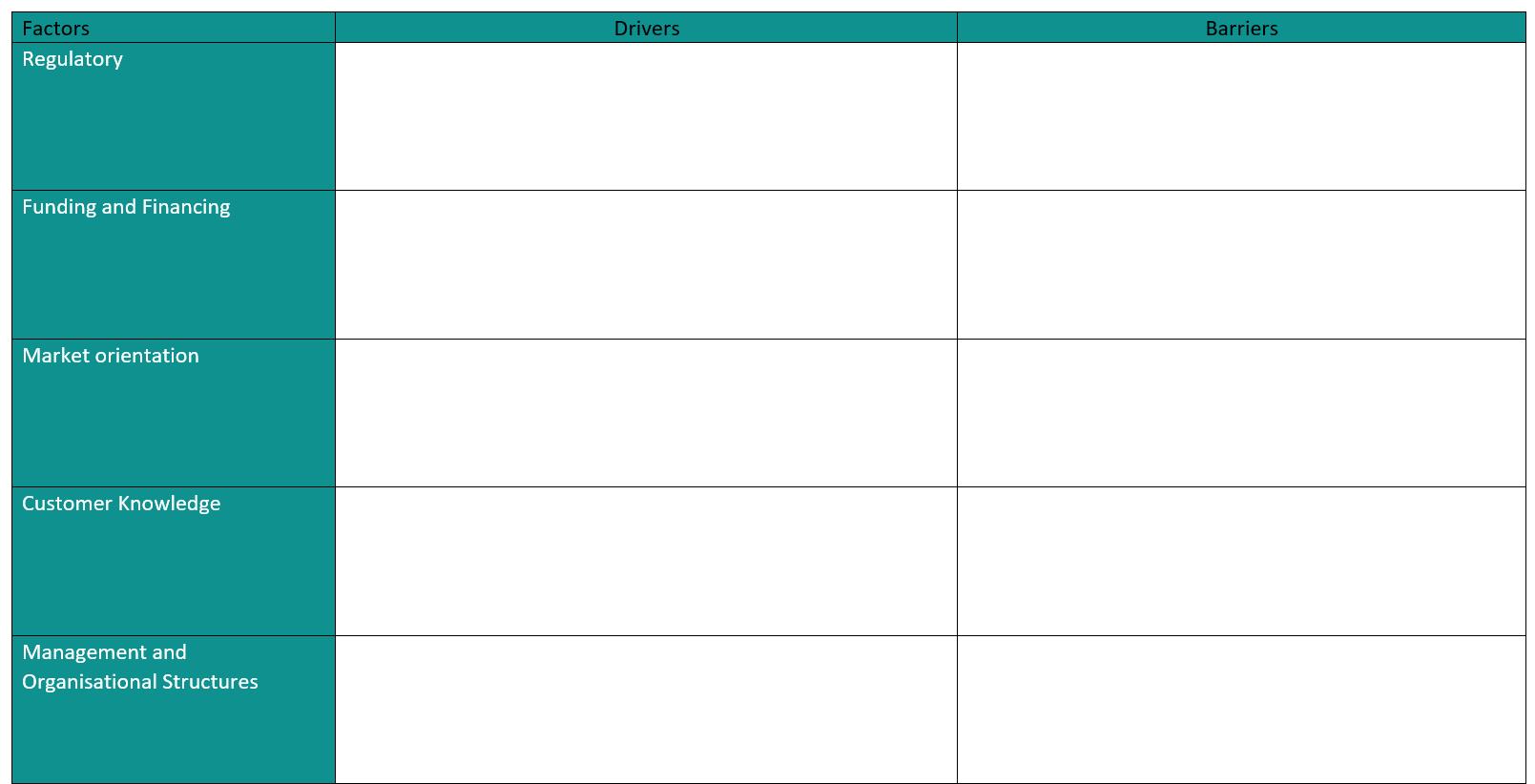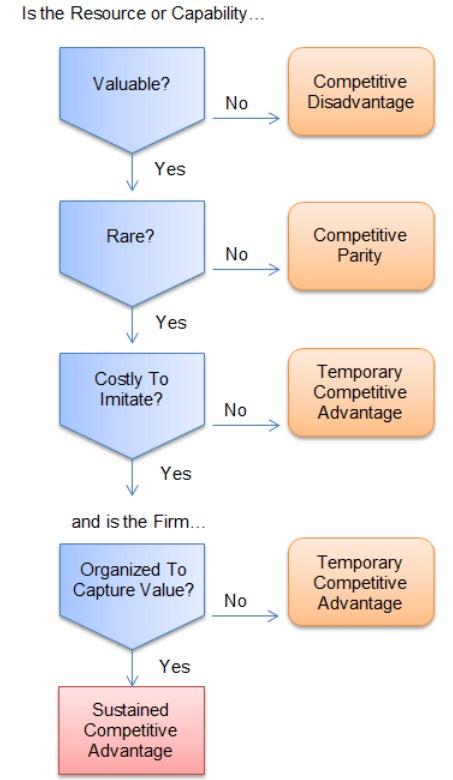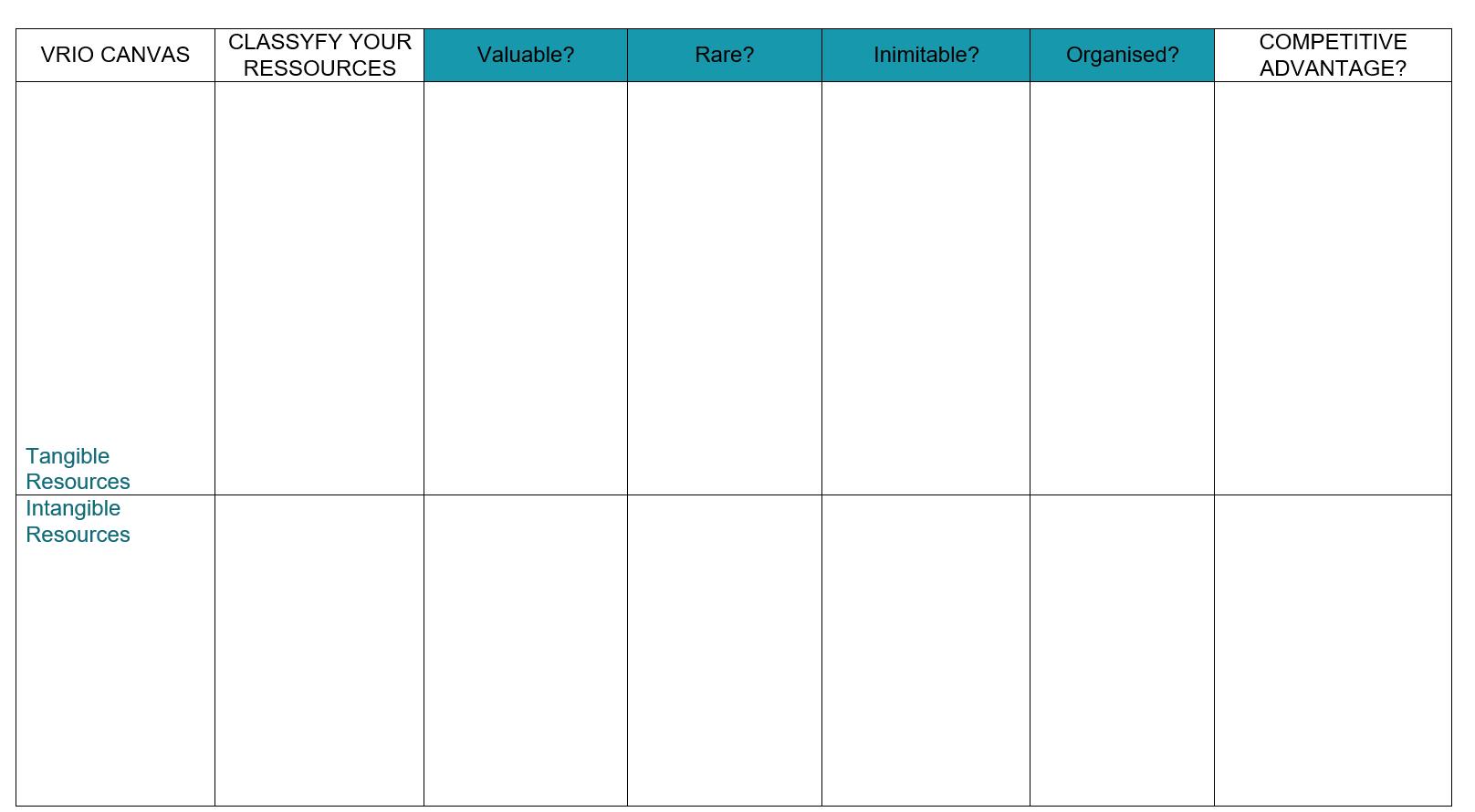Businesses Responsible Innovation







The overall aim of the TITAN project is to support small business ownermanagers, and their staff, to acquire appropriate sustainably responsible leadership and innovation skills which can implemented in a working context, as a way of achieving sustainable development goals alongside delivery of value to customers and other stakeholders.
The TITAN project will achieve this aim through the development and delivery of a curriculum consisting of a set of complementary learning materials and resources including:
• A set of competence matrices, or modules, related to different aspects of sustainably responsible leadership and innovation
• A number of learning materials and resources (e.g. flipbooks, video guides)
• A set of assessment tools for small business owners managers and their staff
• An open educational video resource.
The TITAN curriculum will enable small businesses and organisations to:
• Identify different ways of introducing and embedding sustainability in their business models
• Assess strengths and areas for development within their business
• Explore processes and practices which can be used to implement and embed sustainability
• Learn from the experiences of different businesses and organisations who have introduced sustainability in their business models and processes and practices.
A number of themes, or modules, underpin the TITAN curriculum including:
• Sustainably responsible management
• Business culture for sustainability and innovation
• Business ethics in leadership and innovation
• Embedding sustainability in business processes
• Business responsible innovation
• Holistic approaches to innovation.
Sustainability leadership is defined as ‘a process of influence that delivers direction, alignment and commitment, and aims to address social, environmental and economic issues to create a better world’ (McCauley, 2014) and sustainable leaders are ‘individuals who are compelled to make a difference by deepening their awareness of themselves in relation to the world around them. In doing so, they adopt new ways of seeing, thinking and interacting that result in innovative, sustainable solutions’ (Sustainability Leadership Institute, 2011).
Over the last five years or so, there has been an increasing number of articles, books and papers published on different aspects of how small businesses can embed sustainability into their business models and specific business processes and practices. These come from academic institutions, research institutions, policy and professional bodies and business and entrepreneurship magazines. Whilst these articles, books and papers provide valuable insights into the case for introducing and embedding sustainability and generic tips and techniques, they can often be difficult to access and tease out the practical implications for introducing and embedding sustainability, particularly for small business owner-managers and their staff. There is a lack of tailored, or demand led resources which can assist small businesses in understanding current strengths and areas for development, making sense of the importance of different opportunities in their task environment to introduce sustainability and manage the journey from idea to action.
The flipbooks have been designed to address this gap. There are six flipbooks which relate to the key themes underpinning the TITAN curriculum, and they provide:
• An accessible overview of the state of current thinking
• Insights from other small businesses who reflect on what works well and less well in introducing and embedding sustainability into their business models
• Access to exercises to support reflection on own learning and skills development
• Access to useful resources on different aspects of introducing and embedding sustainably responsible leadership and innovation.
The flipbooks are complemented by:
• A series of TEDx type videos which reflect on different aspects of sustainably responsible leadership and innovation
• A range of micro-learning activities which provide you with an opportunity to assess your own understanding, behaviours and skills.
This flipbook explores Responsible Research and Innovation in businesses, the importance, and strategies to involve actors from the Quadruple helix in smart innovations and the blockers and, drivers of RRI in SMEs.
Innovation its much more than invention. According to Joseph Schumpeter, innovation combines “new or existing knowledge, resources, equipment and other factors” but also have a crucial social function portrayed as a commercial purpose Peter Drucker defends that innovation starts by creating wealth through new products or services and then turns societal needs into business opportunities leading to profitability. Mathias Schüz (2016) challenges this notion of wealth by defending that “wealth should also be created by offering solutions for problems threatening all living beings and future generations. Therefore, sustainable responsibility is indispensable when creating wealth” (p.636).
But why should companies be interested in using RRI?
• Not adopting RRI leads to missed competitive opportunities as well as negative economic, societal and environmental impacts.
• RRI is also beneficial for companies because social and environmental innovations can create economic benefits and business opportunities.
• By adopting RRI, companies can create a better alignment with society, government and academia.
• Through the implementation of RRI, companies are more profitable, allowing them to invest in business tools, equipment and processes affecting directly the productivity but also investing in employee’ engagement and education which has a positive effect on productivity.
• Implementing RRI strategies can raise a sense of “meaningful work” among employees.
• By aligning the company ethical values to their customers, companies will experience more engaged customers. Engaged customers do not need marketing directed to them (which reduces de costs) and will recommend the company to others.
• Green investors consider that social and corporate governance criteria generate long term competitive financial returns and social positive impact
In this sense, companies have three dimensions of responsibility: aesthetic responsibility (Ecological dimension), Technical Responsibility (Economic dimension) and Ethical Responsibility (Social dimension).
Three dimensions of responsibility Source: https://www.researchgate.net/publication/307477409_Sustainably_Responsible _Leadership_and_Innovation
For companies to truly thrive in all three dimensions, the external stakeholders should be engaged in the businesses innovations. It is usual for businesses to organize participatory projects to antecipate their products’ market value. Under the umbrella of lead user, open innovation, and user innovation, customers (or potential customers) are invited to participate in the assessment of specific, practically final, products, with the commercial focus in mind.


What we are proposing here goes way beyond that – engaging the Quadruple Helix The Quadruple Helix Model of innovation recognizes four major actors in the innovation system: science (academic research), policy (government), industry (business), and civil society (Schutz et al., 2019).
The Quadruple Helix Model highlights the importance of society participating in research and innovation. For companies, Quadruple Helix Collaboration models have been promising to increase efficiency and increase responsibility.
Key aspects for implementing an RRI approach are:
• Being inclusive by involving a diverse range of stakeholders in the process. The stakeholders should be identified in a structured and exhaustive way The ACCOMPLISSH guide to co-creation provides basic guidelines for setting up and conducting co-creation partnerships in a quadruple helix setting
• RRI principles should be shared by all workers. Nevertheless, it is the CEOs, senior executives and project managers’ responsibility to organise RRI internally when developing research of products or services Explore the tool ACM Code of Ethics and Professional Conduct on this topic.
• RRI should be integrated along the whole value chain, complemented with a strategy for assessing ethical and social risk impacts. The company takes responsibility for its commitment and for the creation of ethical culture among employees.
In terms of efficiency, Quadruple Helix Collaboration models promise to provide extra problem solving capacity, particularly when it comes to tackling complex societal problems, (Head & Alford, 2015). When systematic change is needed for tackling these complex problems and individual organizations alone cannot deliver, it is these quadruple collaborations that could do the job By integrating expertise and value driven behavior from all four helixes, quadruple helix collaborations are expected to not only succeed more where individual sectors alone would fail but also to create a more responsible innovation environment (Riconfigure, 2021).
Source:https://www.sciencedirect.com/science/article/pii/S240587261 8301394

There are many ways for your company to involve actors from the Quadruple Helix. The first step is for the company to analyze its network of partners, clients, potential connections to the public sector, etc. By already knowing some of these actors, you know how to interact with them. Maybe one important client prefer to be contacted via email but the city council only responds by face to face meetings requests. Work with what you have to make these first connections. Then, there are several approaches you can use, such as:
Living Labs are real life test and experimentation environments that foster co creation and open innovation among the main actors of the Quadruple Helix Model. You can know more about it at the European Network of Living Labs where you can find a range of tools from toolkits, webinars, courses and even learn from others experiences or even share yours in the online network. According to “A Quadruple Helix Guide for Innovations”’ report , “the idea is that people's ideas, experiences, and knowledge, as well as their daily need for support from products, services, or applications is the starting point and that these factors stimulate and challenge the development process. The feedback of users enables the tailoring of technology to real-life use. This speeds up the lifecycle of realization of innovations ” (p 6)
Service Design is to design the overall experience, process and strategy of a service (either for a new service or to better one existing already) with the objective of making it more useful, useable, desirable for clients, more efficient and effective for organizations. Service Design is an interactive method where the challenges are solved from the user perspective. As an interactive process, it is possible to go back and forth based on the lessons learned along the way. There are five main steps in implementing this strategy:
a. In this stage you need to define the framework and scope of the project/problem together with a team. It is important to involve key people as early as possible and set the basis to involve end users as well. The main objective is to identify the right problem and avoid assumptions. Methods used can be brainstorming, dialogues and stakeholder mapping
a. Ethnographic inspired tools and methods are often used in this stage in order to fully understand people experiences and lives Methods used can be brainstorming, focus groups, open space, co creation, workshop and customer journeys. You can also combine these tools together.
a. With a large amount of data its time to analyze it in order to extract understandable and useful patterns and connections. Methods can be meetings, dialogues, focus groups, customer journeys, personas and workshops
a. This is the stage to create as many ideas as possible and suggest different solutions for the problem This can be done through Idea Generation Workshops where people with different steps of skills contribute with their ideas. Best ideas advance to concepts, services prototypes Methods used can be Hackathon, Open Space, Co-creation, Brainstorming, focus groups and interviews.
a. The new solutions are implemented and tested where users can directly experience it as well as companies can relate to previously established criteria such as finances and quality. Methods can be surveys, interviews and focus groups.
Methods are activities that can be implemented with the quadruple helix in any phase of the research Here you have a quick overview of some of the methods available.
Is a group problem solving technique that involves the spontaneous contribution of ideas from all members of the group. It can be implemented in a group discussion/meeting and/or online via online tools.
Involves different stakeholders including the end-users/citizens in developing or improving new products and services. The main purpose of a co creation process is to bring end users into co creating with you from the start of the design process, by empowering them to work with you. “Not only is a community far more likely to adopt a practice or service that it helped create, but you’ll also gain valuable insight into all facets of your solution. Co creation usually consists of two steps; contributions of experiences and then selecting the most promising contributions” QHGI, p 9
It’s a method that describes the journey of a user and his interaction with services It is the set of interactions that a customer has with a brand in the process of buying a service or product. Basically, it considers the complete interaction roadmap from brand discovery to purchasing and beyond This method allows to discover what parts of the service works for the end user and what parts need improvement.
A focus group is a small set of six to ten people who usually share common characteristics such as age, background, geography, etc. The set comes together to discuss a predetermined topic. The researcher asks questions to the group and allow participants to speack freely while taking notes or records for post analysis.
Hackatons are used when the idea is to develop a completely new service or product in a very short time (usually 12 to 24 hours). Participants are organized in teams and present their results to a jury in the end of the time
“Open Space” is a technique for running meetings where the participants create and manage the agenda themselves. Sessions can be for between five to 1000 plus people (providing you have a big enough venue). This method is ideal if you want participants to gain ownership of an issue and come up with solutions. In Open Space meetings, the central theme is set in advance, but the participants create and manage their own agenda of parallel working sessions around a central theme of strategic importance. Events can take one day or longer.
Personas are fictional characters, which you create based upon your research to represent the different user types that might use your service, product, site, or brand in a similar way. Creating personas will help you understand your users' needs, experiences, behaviors and goals. Personas provide meaningful archetypes which you can use to assess your design development against Constructing personas allows you to ask the right questions.
It is a method where a group of people is actively involved and participating hand on. Organizing a workshop involves planning how to motivate participants to create the most value Workshops can have multiple formats, inform participants how you are organizing yours and what next steps will be.
is an organized conversation with one moderator, several chosen speakers that bring a variety of perspectives to a subject, and an audience who may simply observe or participate by asking questions. This method enables participants to make a full contribution to discussions on issues of shared concern and to generate ideas for action. This method works well when there is a relatively clear topic to be discussed.
Download the TITAN VRIO CANVAS and start by identifying your company resources.
Pro-tip: You can look into the value chain so identified the most valuable activities (which are the source of cost or differentiation advantage) and look into your company SWOT analysis to extract the strengths of the company that are used to exploit opportunities or defend against threats (which is the exact same thing a valuable resource does).
If you are still struggling in identifying resources, use these questions (developed by the Strategic Management Insight):
• Which activities lower the cost of production without decreasing perceived customer value?
• Which activities increase product or service differentiation and perceived customer value?
• Have your company won an award or been recognized as the best in something? (most innovative, best employer, highest customer retention or best exporter)
• Do you have access to scarce raw materials or hard to get in distribution channels?
• Do you have special relationship with your suppliers? Such as tightly integrated order and distribution system powered by unique software?
• Do you have employees with unique skills and capabilities?
• Do you have brand reputation for quality, innovation, customer service?
• Do you do perform any tasks better than your competitors do? (Benchmarking is useful here)
• Does your company hold any other strengths compared to rivals?
Finding rare resources:
• How many other companies own a resource or can perform capability in the same way in your industry?
• Can a resource be easily bought in the market by rivals?
• Can competitors obtain the resource or capability in the near future?
Finding costly to imitate resources:
• Do other companies can easily duplicate a resource?
• Can competitors easily develop a substitute resource?
• Do patents protect it?
• Is a resource or capability socially complex?
• Is it hard to identify the particular processes, tasks, or other factors that form the resource?
Find out if your company is organised to exploit the resources you have identified Start by assessing the strategig management process and its effectiveness, assess the overall motivation and the reward systems in place, evaluate the company culture to reward innovative ideas, evaluate the management and control systems and if the structure is designed in such a way that allows the best use of a resource.
Now that you have identify the resources that bring your company suitable competitive advantage you have to put in place the processes to protect these resources at all costs. The first thing is to make the top management aware of these resources and suggest ways for it to be used and lower costs or to differentiate the companies’ products or services. Then think/brainstorm about how to make it more costly to imitate This way, these resources will stay rare much longer.
Make a plan to revise the VRIO resources on a regular basis. The value of resources changes over time and constant revision is imperative Competitive will work on achieving the same competitive advantage so they will be working o9n replicate your resources which will then cease to be rare. It is usual that new VRIO resources are developed inside an organization so keep using the VRIO canvas exercise.


The Blockers and drivers of Responsible Research and Innovation (RRI) in businesses
The Blockers and drivers of Responsible Research and Innovation (RRI) in businesses, according to Alexander Auer and Katharina Jarmai (2017), in the article “Implementing Responsible Research and Innovation Practices in SMEs: Insights into Drivers and Barriers from the Austrian Medical Device Sector” are:
Regulatory Framework
Drivers:
• RRI potential implementation required by law
• Threatened fines for not meeting RRI standards
• Governments promoting RRI and a development strategy for SMEs
• Information about RRI and ethical support from regulatory bodies
Barriers:
• Unclear regulatory focus and changing regulatory framework at different geographical scales
• Theory driven regulations divorced from reality
• Lack of information and support measures about RI
Funding and Finance
Drivers:
• European and national funding agencies require attention to societal and gender aspects
• Increased access to European and national funding when considering RRI aspects
Barriers:
• Higher innovation costs expected from RRI implementation
• Additional financial resources required for RRI implementation
Drivers:
• Future economic value expected from taking up RRI
• Growth potential and benefits expected from taking up RRI
• Expected costs reductions from implementing RRI
Barriers:
• Lack of qualified female workforce in the labor market
• Cost and success pressures paired with uncertain outcomes from RRI
• Shareholder value and profit maximization thinking paired with unclear innovative and profit potential
Drivers:
• Increased company reputation and visibility among potential customers expected from complying with RRI
• Compliance with their customers internal rules (certain RRI aspects)
Barriers:
• Increased customer engagement can hamper finding consensus among stakeholders
Drivers:
• Ethical and responsible thinking and societal considerations of founder, managers or employees to comply with RRI aspects
• Employees transfer understanding of responsibility from previous companies
• Internal codes of conduct advocated by management require employees o comply with RRI
Barriers:
• Lack of knowledge about RRI and how to implement RRI aspects requires strong personnel efforts
• Personal attitudes and experiences of founders conflicts with RRI aspects
• Lack of governance structures in SMEs affects uptake of RRI
• Long-established governance structures prevent the introduction of structural change in companies
• Implementation of RRI takes additional efforts and personnel resources
Drivers:
• Compliance with their innovation partners ‘responsibility rules or codes of conduct (large RRI advocates)
• Increase company reputation and visibility among potential collaboration partners expected from complying with RRI
Barriers:
• Innovation partners advocate their own interests and affect decision making and the likelihood of resistance to RRI
In the scope of the TITAN project, the Drivers & Blockers of RRI exercise was developed to support you identifying the drivers and blockers in your company.
You can use a departments’ approach for integrating RRI practices within your company by following the steps below.
Executive and Management level:
• Set up a vision
• Commit to the vision & process. Be accountable for results.
• Promote an Ethical culture
• See RRI as an investment
• Align internal strategies with RRI
• Assess the benefits of implementing RRI
• Establish an ethical committee
• Set up an RRI manager
• Collect feedback
Research teams:
• Assess ethical risks
• Select solutions to avoid the risks
• Apply security measures to protect data
• Engage stakeholders
• Test prototypes with end-users
• Support Open Innovation
• Coordinate RRI with Corporate Social Responsibility (CSR)
Human Resources:
• Recruit workers willing to engage in RRI
• Set up ethical training
• Promote multidisciplinary
Legal:
• Ensure compliance with ethical standards
• Provide legal frameworks
• Assure compliance mechanisms
• Ensure license agreements aligned with RRI
• Keep the company updated
• Anticipate changes
CSR
• Cooperate in the implementation of RRI legal framework
• Collaborate with HR and R&D teams Marketing
• Register feedback
• Monitor RRI impacts on products and services
• Monitor user satisfaction
• Report relevant social phenomena and trends
Download the resource Drivers & Blockers of RRI and try to identify the drivers and blockers for implementation of RRI faced by your company. If you struggle doing this exercise by your own, use some of the methods described above to capture other the views of your coworkers as well
Source: https://titan-leadership.eu/files/3.Drivers&Blockers_RRI.docx

If you are thinking on implementing RRI in your company, you can use the following useful tools to support you in the process:
KARIM Responsible Innovation Criteria - a manual for entrepreneurs and innovation support organisations. It aims to provide both an introduction to the foundations of the emerging concept of responsible innovation and a practical guide for implementing such an approach within a project
Strategy for participatory research in communities and capacity building of existing science shops provide a vision and guidance to support the future development and capacity building of Science Shops.
RECIPES | REconciling sCience, Innovation and Precaution through the Engagement of Stakeholders aims to reconcile innovation and precaution by developing tools and guidelines to ensure the precautionary principle is applied while still encouraging innovation.
You can also search for tools for your specific sector on RRI-Tools
Relevant Articles:
Forbes: 2022: The Year Of Responsible Business
Lessons for Responsible Innovation in the Business Context: A Systematic Literature Review of Responsible, Social and Sustainable Innovation Practices


The resource-based view (RBV) model is a strategy model that considers an organization's resources as key to sustainable competitive advantage.
Resource based view argues that resources, both tangible and intangible, must be heterogenous, immobile and have VRIO properties to become VRIO resources VRIO resources result in sustained competitive advantage
Resource based view
Source: https://strategicmanagementinsight.com/tools/resource based view/
The Resource Based View (RBV) examines and evaluates an organization's resources to determine how it achieves sustainable competitive advantage. According to the Resource-based view, companies would be better if exploiting external opportunities using existing resources (in a new way) than if trying to acquire new resources any time a different opportunity appears. In this model, resources are given a major role in the support of companies to achieve the best organizational performance
There are two main types of resources:
Tangible resources these are physical objects/things such as land, buildings, machinery, equipment and capital. These types of resources can easily be bought in the market so they do not provide much advantage to companies in the long run (because rival companies can also acquire the same resources).
Intangible resources these are all the other resources that have no physical presence but are still owned by the company such as the brand reputation, trademarks or intellectual properties These types of resources are often built over a long time and cannot be acquired by other companies from the market, which make intangible resources the main source of competitive advantage.
To these two types of resources, there are two qualities indispensable to have:
Heterogeneity different companies have a different set of resources If this was not the case they could not compete with each other. Companies are exposed to the same external and competitive forces (and external factors) and some of them implement strategies that outperform their competitors In the Resource based view model, it is assumed that companies achieve this competitive advantage through the use of complementary bundles of resources.
Immobility – resources are not mobile and do not move from company to company Because of these quality, companies cannot imitate rivals resources and implement similar strategies. Intangible resources such as brand equity, processes or Intellectual Property are usually immobile.
Apple and Samsung Electronics operate in the same industry, are exposed to the same external forces and have very different organizational performance due to the differences in their resources. Apple sells the same types of products than Samsung but at a much higher price. Why? Because Apple have a brand reputation that allows it to sell their products at a high price and have higher profit margins. Samsung cannot copy this strategy because it does not have the same brand reputation
The RBV focuses on the notion of difficult to imitate attributes as sources of superior performance and competitive advantage (Barney, 1986; Hamel and Prahalad, 1996).
Resources that are difficult to transfer or acquire, that require a long learning curve or a significant shift in the organization's atmosphere and culture, are more likely to be unique to the company and hence more difficult to copy.
According to Conner, the difference in performance across organizations is due to the presence of distinct inputs and skills (1991).
Case study 2:
Honda, the world’s largest engine manufacturer is following a RBV strategy, by building its business strategy around the company’s strength, capability and expertise in building petrol based engines. Honda initially started with small clip-on engines for bicycles then moved to two wheelers such as scooters and motorbikes, marine engines, generators, lawn and garden equipment, and cars and even jet planes. Each of these products competes in quite different product verticals but leverages a unique resource and capability of Honda to build world class petrol-based engines meet them in a positive way: Identify and respond to all stakeholder expectations possible. The ability to respond to a broad variety of stakeholder expectations through equal dialogue gives both parties the chance to learn more about each other and even reach a mutual understanding

The VRIO Framework is one tool of the Resource-Based View managerial framework which examines the links between a company’s internal characteristics and its overall performance, defending that a company key determinants are its resources and a Sustainable Competitive Advantage VRIO stands for Value, Rarity, Imitability and Organisation.
The VRIO Framework was originally developed by Barney, J. B. in 1991 in his paper ‘Firm Resources and Sustained Competitive Advantage’ where it was identifies the attributes companies’ resources should have to be perceived as competitive advantadge. In that time, Barney defended that resources should be valuable, rare, imperfectly imitable and non-substitutable (VRIN). But in 1995, in the paper ‘Looking Inside for Competitive Advantage’ Barney introduced the final VRIO framework.
To use the VRIO framework, you start by asking four questions:
1. Is the resource valuable?
2. Is the resource rare?
3. Is the resource imitable, or is it costly to imitate?
4. Is the company organized to capture the value of this resource?
If a resource meets all these four requirements, then it is a resource that can bring sustained competitive advantage for the company.
Source: https://strategicmanagementinsight.com/tools/vrio/

Is this resource adding value in the way the company is able to exploit opportunities or defend against threats? If so, it is a valuable resource. A valuable resource can also help organisations to increase the perceived customer value. How? By increasing differentiation or/and decreasing the price of the product. If that resource cannot meet this condition, it leads in fact to competitive disadvantage. So, it is important to continually review the value of the resources because constantly changing internal or external conditions can make them less valuable or useless at all.
Is this resource very difficult to be acquired by other companies? If it is, than it is a rare resource. This type of resources grant temporary competitive advantage. When other companies can acquire the same resource or use the same type of capability, then competitive parity is achieved. Although what a company wants if competitive advantadge (and not parity) you should not neglect resources that are valuable and common because losing them would hurt the organization in their ability to stay on the market.
Is the resource imitable, or is it costly to imitate?
This resource is costly to imitate if other companies don’t have it and can’t imitate it, nor can they buy or substitute an reasonable price. There are two ways to imitate a resource: a) by directly imitating the resource (duplicate) or b) by providing a comparable product/service (substituting) Resources can be hard to imitate because of:
Historical conditions if these resources were developed due to historical events or over a long period of time;
Causal ambiguity if companies cannot identify which resources are the cause of the others’ company competitive advantadge;
Social complexity if these resources are based on the company’s culture and/or interpersonal relationships.
Your resource is only truly useful if the company knows how to take advantage from it. For this, the company should be organized in such a way that is best to effective capture the value of the resource. This can be organizing the management systems, the internal processes, internal policies, organizational structure, or even the companies’ culture, to fully realize the potential of its valuable, rare and costly to imitate resource. When you achieve it, you will have a resource that offers true sustainable competitive advantage.
In the scope of the TITAN Project the TITAN VRIO canvas exercise was developed to support you adopting this approach.

Source:https://titan leadership.eu/files/5.VRIO_Model_Canvas.docx
Is the company organized to capture the value of this resource?
One good use of the VRIO Framework is from Google. By using the VRIO framework, Google took a completely different approach to Human Resources Management and now make decisions using massive amounts of objective data Normally, companies rely on trust and relationship in the management of Human Resources. Instead, Google uses data about its employees to manage them. This allows Google to making correct decisions (data based) about which people to hire and the best way to use their skills. Google is able to hire innovative employees that are very productive. Not only this capability is valuable but is also rare as no other company uses it. And one big reason for it is because it is very costly to imitate for now (it involves to build highly sophisticated software and train HR managers to make data based decisions and discard their old management methods). Google has organized to exploit this advantage by training irs HR managers and having an IT team dedicated to this

The RBV model (and the VRIO framework) should be used as a lens for your company innovation strategy. An innovation strategy is key to achieve sustainable innovation and can be defined as “a clearly-defined plan of structured steps a person or team must perform to achieve the growth and future sustainability goals of an organization”. The innovation strategy should state its objectives and strategic approach to innovation; define the market (customers and competitors); define your company value proposition; Assess and Develop Your Core Capabilities and resources; and establish your Innovation Techniques and Systems. The RBV model (and VRIO framework) will help you in the assessment and development of your core capabilities and resources by supporting you in the definition of the most valuable resources to be taken advantadge of to create sustainable competitive advantadge.
Does your company already have an Innovation Strategy? If so, relect on how to incorporate Business Responsible Innovation Strategies (by adoption RRI principles, involvement of stakeholders, adopting an RVB model lens and the VRIO framework). Make a PowerPoint presentation to share with your team and manager and be an agent of change in the company
If the company does not have an Innovation plan, try to come up with a very simple one that already incorporates Responsible Innovation Strategies.

As we have seen, Business Responsible Innovation is not only for large corporations. A small company can also use RRI strategies to engage multiple stakeholders in the innovation process, aligned with its innovation strategy and making the most of the RVB model and VRIO framework. The most important step is to start, even if it is at a smaller scale at first.

Barney, J. B. (1995). Looking Inside for Competitive Advantage. Academy of Management Executive, Vol. 9, Issue 4, pp. 49 61
Dam, R. and Siang, T. (2022). Personnas and how you should use them. https://www.interaction design.org/literature/article/personas why and how you should use them
European Network of Living Labs (ENoLL). https://enoll.org/about us/
IN FOR CARE project (2019). A Quadruple Helix Guide for Innovations. https://northsearegion.eu/media/11651/a quadruple helix guide for innovations.pdf
Julia Kylliäinen (2018). VIIMA. https://www.viima.com/blog/innovation strategy
Jurevicius, O. (2021). Resource-based view. https://strategicmanagementinsight.com/tools/resource based view/
KARIM project. Intoduction to Responsible Innovation criteria a guide for entrepreneurs. https://www.nweurope.eu/media/1118/guide_online.pdf
McCauley, C. (2014) Making Leadership Happen, Center for Creative Leadership, Greensborough, North Carolina.
Riconfigure, 2021. Quadruple Helix Collaborations in Practice - Stakeholder Interaction, Responsibility and Governance
https://ec.europa.eu/research/participants/documents/downloadPublic/NStkY0hPOVozQlF0b mcrT3BuOGdWeHgyY2xZcmJWZWxpcEUvRm11cVpmVi9oSGhkVC9ITkl3PT0=/attachmen t/VFEyQTQ4M3ptUWVYNm03YlFVZ05keFQ5eUE1ZlBVYkY=
Rothaermel, F. T. (2012). Strategic Management: Concepts and Cases. McGraw Hill/Irwin, p. 91
Schüz, M (2016). Sustainably Responsible Leadership and Innovation. https://www.researchgate.net/publication/307477409_Sustainably_Responsible_Leadership _and_Innovation
Schütz, F. et al (2019). Co shaping the Future in Quadruple Helix Innovation Systems: Uncovering Public Preferences toward Participatory Research and Innovation, She Ji: The Journal of Design, Economics, and Innovation. https://www sciencedirect com/science/article/pii/S2405872618301394
Sustainability Leadership Institute (2011) Definition of Sustainability Leadership, cited in Visser, W and Courtice, P (2011) Sustainability Leadership: Linking Theory and Practice, Institute of Sustainability Leadership, University of Cambridge, Cambridge.
If you're interested in reading more about sustainable leadership and innovation, you can find additional learning materials from the TITAN project website.



Website: TITAN | Project Transformation Training to Empower https://titan leadership.eu/
The European Commission’s support for the production of this publication does not constitute an endorsement of the contents, which reflect the views only of the authors, and the Commission cannot be held responsible for any use which may be made of the information contained therein.
Project number: 2020 01 UK01 KA204 079163